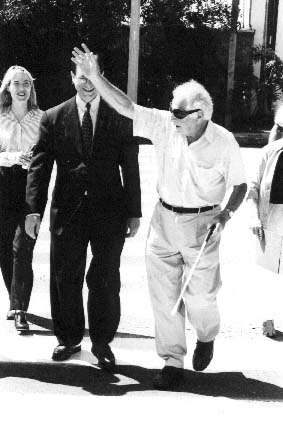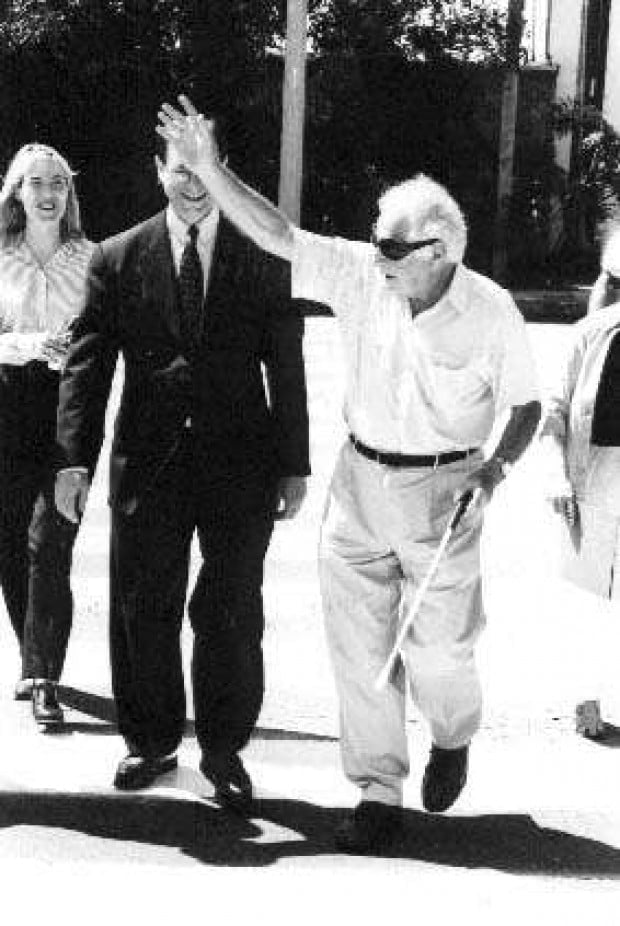It wasn’t the fact of last week’s water-main break that troubled Duke’s Malibu restaurant manager Paul Spooner, nor quite so much the fact that his restaurant’s business was cut in half. It was the way he found out about the situation.
“Our biggest disappointment, beside the obvious, which was uncontrollable by anybody’s estimation, was that to this minute, I have yet to get any official contact from anyone,” he said.
“Everything is for the benefit of the residents, of which I’m one, and that’s OK. But there is another element of the population, and they’re called ‘business.'”
He said he resents paying taxes to a city that gave him nothing in return. The telephone call that alerted residents did not come through to Duke’s. Spooner was on the premises until 1:30 a.m. Saturday and returned at 7 a.m. He said the telephone number rings through and is not answered by machinery.
Instead, he learned of the water shutoff and road closure by turning on the faucet and through telephone calls from customers. Then, the county Department of Health Services arrived around noon to tell him he was not permitted to operate the restaurant, at least until a number of parameters were met.
“Late Saturday, unbeknownst to us,” said Spooner, “the water came on.” Several hours later he found out PCH reopened. With his restaurant closed but the road open, he was violating his lease, which forbids closure unless PCH is closed.
Nonetheless, the Saturday night Bat Mitzvah and the two Sunday weddings, each with 150 invited guests, went forward as planned. “We did everything we thought we needed to do,” said Spooner.
Kitchen workers boiled water, but much of Duke’s salad bar is prepackaged, its ice is always made from filtered water and the weekend supply of lemonade had been made earlier in the week and stored in five-gallon containers. Drinking water was served by request only, and most customers ordered bottled water or skipped it.
Further west on PCH, Country Kitchen owner Steve Wiley said simply, “When there’s no one here, we still have overhead.”
Wiley said he could easily have continued functioning. His ice is purchased, his lemonade is made from bottled water, his iced tea is brewed. The tap water looked fine to him by Monday, but he was still boiling it to be sure.
“Just a couple of weeks ago, I was bragging about the business,” he lamented. But he wasn’t blaming anyone. “The bottom line is, you realize they can’t help it.”
Shell station manager Mike Hemmatyar noted a 65 percent drop in his business over the weekend. Yet Saturday afternoon, tourists were filling up at his pumps. “I don’t know how they got in,” he said. He was let through by CHP officers at their Malibu Canyon roadblock by simply telling the officers where he worked.
The county health department visited him, also. Most of the food items he sells are prepackaged, but the county told him he couldn’t serve his coffee and fountain drinks.
For those who needed a restroom, Hemmatyar pointed them to the “outhouse” behind neighboring Kentucky Fried Chicken.
At Malibu Beach Inn, water pressure didn’t drop until 7 a.m. Saturday and was back to normal by 3:30 p.m. According to front desk staffer Narelle Valentine, county waterworks telephoned the hotel’s owners, who contacted the manager, who notified staff.
The staff filled the hotel’s bathtubs with water. As guests checked in Friday night, they were told of the problem and given a 50 percent discount on room rates. Said Valentine, “We had no complaints from the guests.”
Sergio Gonzalez, service manager of Granita, said his was the only restaurant to stay open throughout the weekend. Gonzalez said customers were telephoning Manager Jannis Swerman to ask about the situation, so she looked to TV’s Channel 7 news for her information. According to Gonzalez, “Jannis became very upset because they were sending the wrong message to our community here in Malibu. I believe she talked to the news manager and told him to go back on air.”
Later Friday evening, City Manager Harry Peacock came to the restaurant and warned Swerman water would be turned off at 6 a.m. Saturday. Swerman rented a water pump, equipment to wash dishes and several Andy Gumps. But, Gonzalez said, “We shut down our espresso machine because there wasn’t enough pressure for it to work.”
Restaurant owners from down the road telephoned Swerman to warn her Granita was next on the health department’s list. The health department arrived before noon Saturday, but everything at Granita was still operational.
Gonzalez estimated 110 “outsiders” canceled, but the locals who walked in more than made up for the cancellations. “We didn’t even ask for reservations,” he said. “We were the lucky ones, and we were going to take everybody.”


